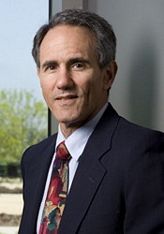The U.S. Supreme Court has decided three cases over the last three years on the Sixth Amendment right of criminal defendants to confront the forensic scientists or technicians who perform laboratory tests. Professor
David H. Kaye and his two co-authors of
The New Wigmore, A Treatise on Evidence: Expert Evidence (2d ed. 2011) were among the first academic lawyers to analyze the issue in detail. In the latest case on the subject,
Williams v. Illinois, decided June 18, the Supreme Court took notice.

There was no majority opinion, but every one of the four opinions cited the treatise. Describing the New Wigmore series as “the principal modern treatise on evidence,” Justice Kagan’s opinion for herself and three other Justices relied on the treatise’s discussion in concluding that it was impermissible for the state of Illinois to have secured a rape conviction based in large part on the findings of a private DNA laboratory without calling as a witness anyone who had participated in the typing of the DNA sample from the crime. Instead, the state had a DNA analyst from a different laboratory testify about the meaning and implications of the first laboratory’s results, a procedure that the treatise questioned. Justice Thomas also explicitly endorsed the position taken in the treatise, but his opinion concluded that the laboratory report was not the kind of “formalized testimonial materials” that would trigger the right to confront one’s accusers.
The remaining Justices, led by Justice Alito, were less favorably impressed with the treatise’s analysis, calling it “flawed.” In a separate opinion, however, a member of this plurality, Justice Breyer, listed six complexities as identified in the treatise that he maintained should have led the Court to have the case reargued.
“The morass of opinions in Williams leaves the scope of confrontation right in connection with laboratory reports largely undefined. Courts across the country are struggling with this type of evidence as it relates to the right of criminal defendants to confront all the witnesses against them, including expert witnesses from the forensic sciences. That the Supreme Court looked for guidance to our treatise is very gratifying, especially considering that there is so much good scholarship out there on hearsay and DNA evidence,” said Professor David Kaye, an expert in DNA, statistics, and forensic science evidence.
To satisfy his curiosity about the case, Professor Kaye met with Penn State forensic scientist Reena Roy to review the graphs in the laboratory report, which were lodged with the Supreme Court. Professor Kaye, who is the author of the treatise volume, is now collaborating with UCLA Law professor
Jennifer Mnookin, the principal author of the chapter that discusses confrontation. They are revising and updating the treatise in light of the
Williams case. “We strive to write something relevant, comprehensive, and helpful, and it’s great to know that the Supreme Court has our treatise in hand,” he said.
Professor Kaye is a Distinguished Professor of Law and Weiss Family Faculty Scholar. He also holds a courtesy appointment in the Forensic Science Program in the
Eberly College of Science. Since joining the faculty in 2009, he has taught Criminal Procedure, Evidence, and Forensic Genetics. When not updating the Wigmore treatise, teaching, and writing other books and articles he maintains two blogs,
Forensic Science, Statistics, and the Law and the
Double Helix Law Blog.
